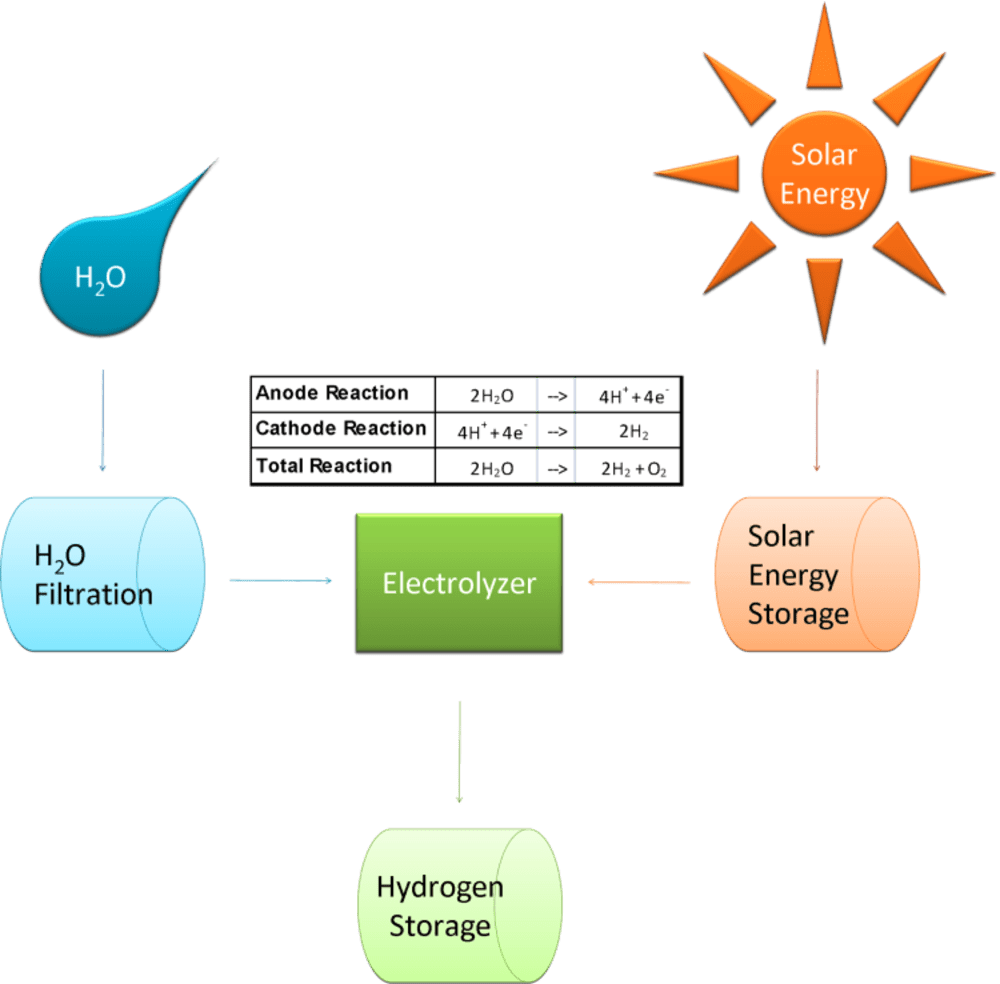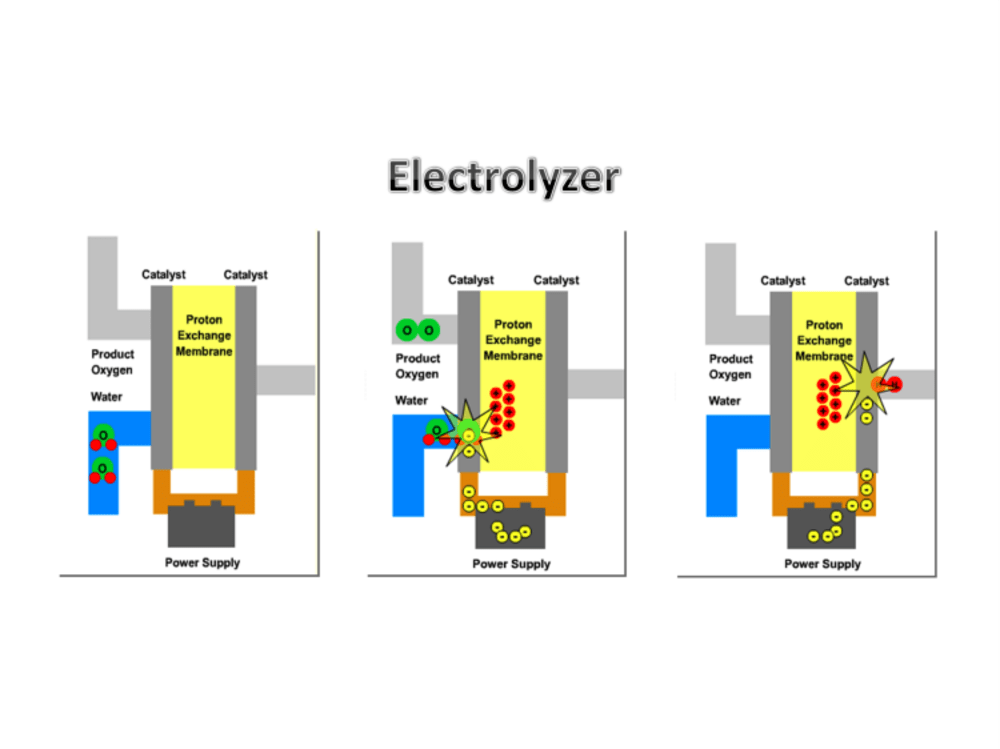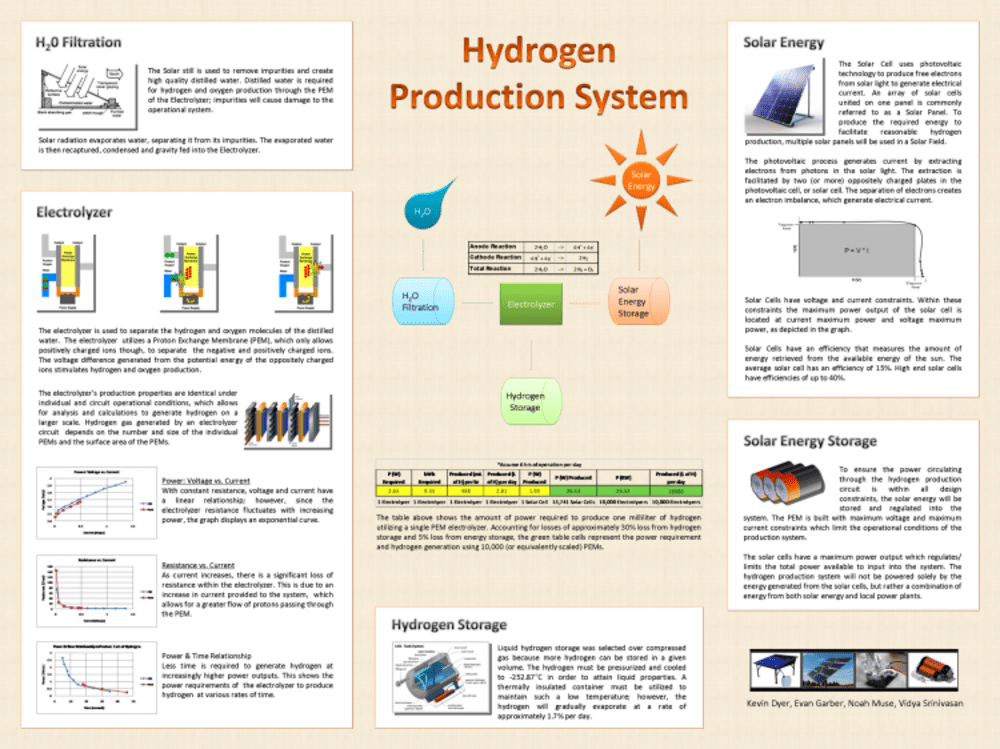With today's society basing all new advancements and technologies on renewable energy, clean energy and energy efficiency, "going green" is the new future.
Hydrogen is the most abundant resource on Earth so implementing this as a new fuel will greatly benefit our environment in numerous ways.
Creating a Hydrogen Production System will allow us to extract hydrogen from water and use it as fuel. This will be done through a sustainable process by utilizing natural resources to provide energy to our system, thus the grid will not be the main source in our controlled system.
With new vehicle technology upgrading to hydrogen as a fuel source, hydrogen production will be mandatory to fuel the new generation of cars, trucks and SUV's.
This production system will be applied internationally to provide fuel for all necessary applications such as fuel for vehicles, tractors, airplanes, rockets ect.
How the System Works:
The Solar Cell uses photovoltaic technology to produce free electrons from solar light to generate electrical current. An array of solar cells united on one panel is commonly referred to as a Solar Panel. To produce the required energy to facilitate reasonable hydrogen production, multiple solar panels will be used in a Solar Field.
To ensure the power circulating through the hydrogen production circuit is within all design constraints, the solar energy will be stored and regulated into the system. The PEM is built with maximum voltage and maximum current constraints which limit the operational conditions of the production system.
A Solar Still is used to remove impurities and create high quality distilled water. Distilled water is required for hydrogen and oxygen production through the PEM of the Electrolyzer; impurities will cause damage to the operational system. Solar radiation evaporates water, separating it from its impurities. The evaporated water is then recaptured, condensed and gravity fed into the Electrolyzer.
An Electrolyzer is used to separate the hydrogen and oxygen molecules of the distilled water. The Electrolyzer utilizes a Proton Exchange Membrane (PEM), which only allows positively charged ions though, to separate the negative and positively charged ions. The voltage difference generated from the potential energy of the oppositely charged ions stimulates hydrogen and oxygen production.
Liquid hydrogen storage was selected over compressed gas because more hydrogen can be stored in a given volume. The hydrogen must be pressurized and cooled to -252.87°C in order to attain liquid properties. A thermally insulated container must be utilized to maintain such a low temperature.
Benefits:
The main benefits to this Hydrogen Production System is that it will be mainly self sustainable, therefore it creates its own energy to produce hydrogen and does not refer to the grid for main power. Simply put, most of our energy is free.
Also unlike the byproducts of our current vehicle fuel, gasoline, hydrogen's byproduct after being converted to energy is pure H2O. This is greatly beneficial because it will minimize the carbon footprint in our society.
Pure oxygen will be harnessed and sold to medical facilities as a sub-product.
Like this entry?
-
About the Entrant
- Name:Evan Garber
- Type of entry:teamTeam members:Evan Garber
Kevin Dyer
Noah Muse
Vidya Srinivas - Patent status:none








